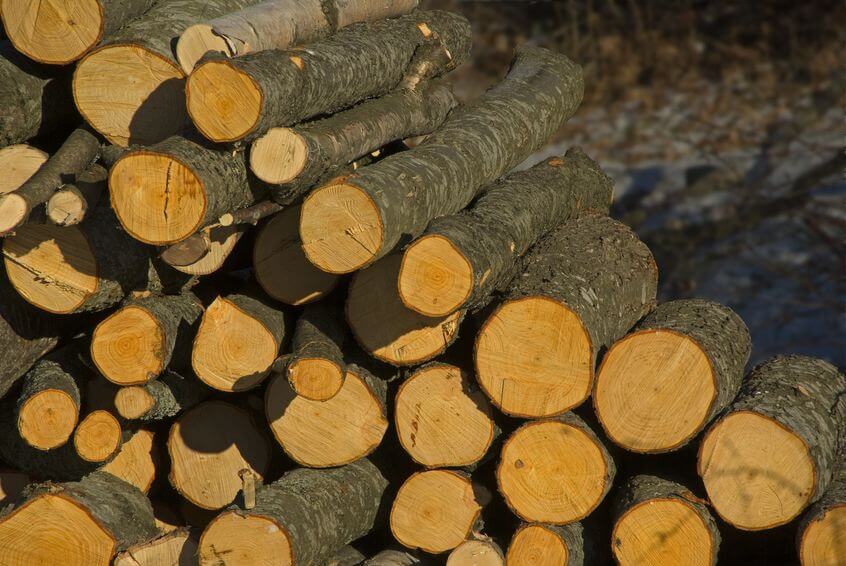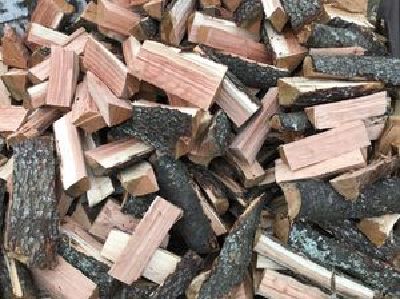Have you ever wondered if cherry wood is good to burn in a fireplace? Well, you’re in the right place! In this article, we’ll explore the qualities of cherry wood as a fuel source for your cozy fires.
When it comes to choosing firewood, it’s important to consider factors like heat output, burn time, and overall quality. So, let’s dive into the world of cherry wood and find out if it’s a good option for your fireplace.
Whether you’re a seasoned firewood enthusiast or just curious about different types of wood, by the end of this article, you’ll have a clear answer to the burning question, “Is cherry wood good to burn in a fireplace?”. So let’s get started and uncover the truth about cherry wood as a fuel source.

Is Cherry Wood Good to Burn in a Fireplace?
Cherry wood is a popular choice for firewood due to its pleasant aroma and beautiful flame. However, before you decide to burn cherry wood in your fireplace, it’s important to consider several factors. In this article, we will explore the characteristics of cherry wood, its suitability for burning, the benefits it offers, and some tips for using it effectively in your fireplace.
Characteristics of Cherry Wood
Cherry wood comes from the Prunus genus of trees, and its distinct reddish-brown hue makes it prized for furniture and woodworking. When used as firewood, cherry wood burns bright and produces a pleasant aroma. It is a dense hardwood, which means it provides a long-lasting fire and produces substantial heat. Cherry wood is typically easy to split and has a moderate moisture content, making it suitable for burning when properly seasoned.
When it comes to burning in a fireplace, the moisture content of the wood is crucial. Green or unseasoned cherry wood contains a significant amount of moisture, which can lead to excessive smoke, poor heat output, and increased creosote buildup in your chimney. To ensure optimal burning, it is important to properly season cherry wood by allowing it to dry for at least 6-12 months. This process reduces its moisture content to around 20% or less, making it suitable for burning in a fireplace.
Benefits of Burning Cherry Wood
1. Pleasant Aroma: One of the primary reasons people choose cherry wood for their fireplace is its delightful fragrance. When burned, cherry wood emits a sweet and fruity smell that can enhance the ambiance of your home.
2. Beautiful Flames: Cherry wood creates vibrant and captivating flames, adding a touch of elegance to your fireplace. The combination of its reddish-brown color and lively blaze makes for a visually pleasing experience.
3. Long Burning Time: Due to its density, cherry wood burns slowly and provides a long-lasting fire. This means you can enjoy the warmth and glow of cherry wood for extended periods without constantly adding more logs.
4. High Heat Output: The density of cherry wood also contributes to its excellent heat output. When properly seasoned and burnt, cherry wood generates significant heat, effectively warming up your living space during colder months.
Tips for Burning Cherry Wood
1. Season the Wood: As mentioned earlier, it’s crucial to properly season cherry wood before burning it in a fireplace. This process helps remove excess moisture, ensuring a cleaner and more efficient burn. Keep the wood elevated off the ground, preferably in a well-ventilated area, and cover the top to protect it from rain while still allowing air circulation.
2. Mix with Other Woods: While cherry wood can be burned on its own, it is often recommended to mix it with other types of firewood for optimal results. Combining cherry wood with hardwoods like oak or maple can provide a balance of heat output, burn time, and flame appearance.
3. Use Dry Wood: Always ensure that the cherry wood you are using is fully dried and seasoned. Dry wood burns more efficiently, produces less smoke and creosote, and reduces the risk of chimney fires. Use a moisture meter to check the moisture content of the wood before burning.
4. Regular Chimney Cleaning: Burning wood, including cherry wood, can cause the buildup of creosote in your chimney. To prevent chimney fires and ensure proper ventilation, it is essential to have your chimney professionally cleaned and inspected at least once a year.
In conclusion, cherry wood can indeed be a good choice for burning in a fireplace, as long it is properly seasoned and used in conjunction with other suitable firewood. It offers a pleasant aroma, beautiful flames, and long-lasting heat. Just remember to follow the necessary precautions, such as seasoning the wood, using dry fuel, and maintaining a clean chimney. By doing so, you can enjoy the warmth and charm of cherry wood in your fireplace.
Key Takeaways: Is Cherry Wood Good to Burn in a Fireplace?
- Cherry wood is a good option for burning in a fireplace.
- It produces a pleasant aroma when burned, enhancing the atmosphere.
- Cherry wood burns hot and efficiently, providing a good source of heat.
- It creates a beautiful glow and flame pattern, adding to the visual appeal.
- However, cherry wood can be more expensive than other firewood options.
Frequently Asked Questions
When it comes to choosing the right wood for your fireplace, you may wonder if cherry wood is a good option. Here are some common questions about burning cherry wood in a fireplace:
1. What are the benefits of burning cherry wood in a fireplace?
Cherry wood is often praised for its pleasant aroma when burned, adding a delightful scent to your home. It also produces a good amount of heat, making it a practical choice for keeping your space warm during the colder months. Additionally, cherry wood tends to burn evenly and creates a beautiful flame, enhancing the ambiance of your fireplace.
However, it’s worth noting that cherry wood can be more expensive compared to other types of firewood, so it may not be the most cost-effective option for everyone. Ultimately, the benefits of burning cherry wood in a fireplace depend on your personal preferences and budget.
2. How does cherry wood compare to other types of firewood in terms of burning efficiency?
Cherry wood is considered to be a hardwood, which generally means it has a higher density and energy content compared to softwoods. This allows it to burn more slowly and efficiently, providing a longer burn time and sustained heat output. In terms of heat value, cherry wood is comparable to other popular hardwoods like oak and maple.
However, it’s important to properly season your cherry wood before burning it. Seasoning involves drying the wood to reduce its moisture content, which improves its burning efficiency. Freshly cut cherry wood contains a high moisture content and can be difficult to ignite and maintain a steady flame.
3. Can cherry wood create a lot of smoke when burned?
Cherry wood is known for producing minimal smoke when burned properly. As long as the wood is well-seasoned and dry, it should burn cleanly, emitting less smoke and reducing the risk of creosote buildup in your chimney. It’s essential to use dry wood to avoid excessive smoke and to regularly clean and maintain your fireplace and chimney to ensure optimal performance.
Remember, if you notice excessive smoke while burning cherry wood, it may be an indication that the wood is not properly seasoned or that there is an issue with your fireplace or chimney, so it’s important to address the problem promptly.
4. Are there any potential drawbacks to burning cherry wood in a fireplace?
While cherry wood offers many advantages, there are a few potential drawbacks to consider. One is the cost, as cherry wood tends to be more expensive compared to other firewood options. Additionally, cherry wood can be harder to source, depending on your location.
Another factor to consider is that cherry wood can produce sparks and embers while burning. To reduce the risk of sparks flying out of your fireplace, it’s important to use a fireplace screen or glass doors as a safety precaution. Regularly cleaning your fireplace and chimney is also essential to prevent blockages and maintain safe and efficient burning.
5. Can cherry wood be used in all types of fireplaces?
Cherry wood can generally be burned in most fireplaces, including open fireplaces and wood-burning stoves. However, it’s crucial to follow the manufacturer’s guidelines and local regulations regarding the use of specific types of firewood in your specific fireplace model. Some fireplaces may have restrictions on certain types of wood or require additional safety measures.
Before burning cherry wood in your fireplace, make sure it is properly seasoned, free from any moisture, and never burn painted or chemically treated wood. It’s always wise to consult the manufacturer’s recommendations or consult with a professional if you have any doubts or concerns about using cherry wood in your fireplace.

Is Cherry better than Oak for Firewood?
Summary:
Cherry wood can be good to burn in a fireplace, but there are some things to keep in mind. First, cherry wood might produce more sparks and embers than other types of wood, so it’s important to have a good fire screen in place. Second, cherry wood can burn quickly, so you may need to add more logs more frequently. However, cherry wood does produce a pleasant aroma and can create a nice ambiance in your home.
If you decide to burn cherry wood, make sure it is properly seasoned and dry. Green or wet wood can create excessive smoke and cause buildup in your chimney. It’s also important to remember that burning wood can release pollutants into the air, so it’s always a good idea to check with your local regulations and use a clean-burning certified stove or fireplace if possible. Overall, with proper precautions, cherry wood can be a good option for your fireplace.
